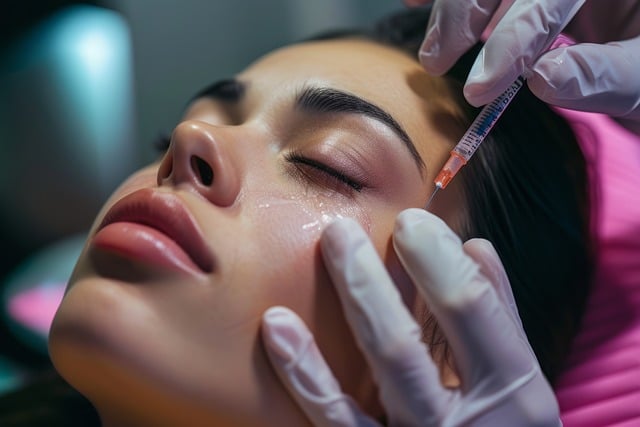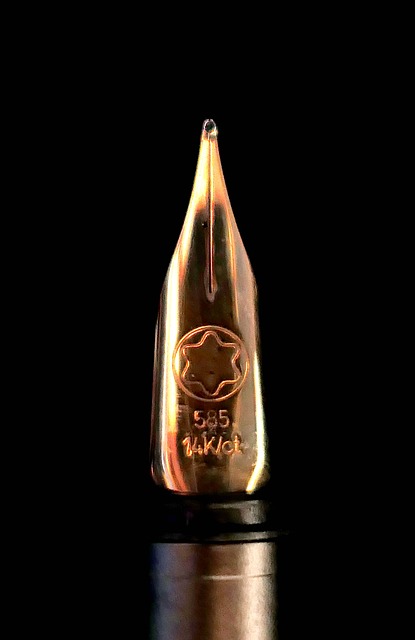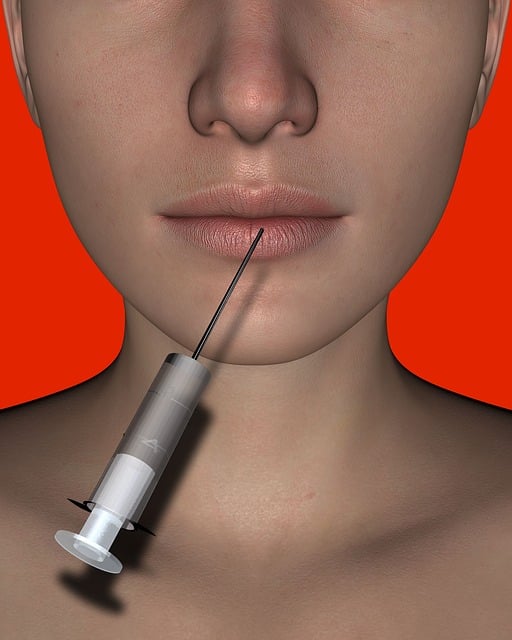Facial aging impacts self-esteem through skin elasticity loss and muscle weakness. Botox and dermal fillers are preventative measures, differing in approach: Botox relaxes muscles to prevent wrinkle formation, while dermal fillers plump lines by injecting hydrogel substances beneath the skin. Botox is non-surgical, targeting specific muscle groups without adding volume, offering natural-looking results within days; dermal fillers enhance volume and structure, lasting up to 2 years. Understanding these differences is crucial when choosing preventative measures for facial aging based on age, skin type, and desired results. Regular Botox sessions extend time between noticeable aging signs, empowering individuals to embrace aging gracefully without drastic procedures.
In the quest for youthful-looking skin, preventative measures are gaining traction. Among the most popular topics is the use of Botox for facial aging before it becomes pronounced. This article delves into the science behind facial aging and explores how Botox, alongside dermal fillers, offers a proactive skincare solution. We’ll break down the mechanisms of action, compare Botox vs. dermal fillers, guide you through selection criteria, discuss safety, expectations, long-term benefits, and more, empowering you to make informed decisions about your skin’s future.
Understanding Facial Aging and Its Impact

Facial aging is a natural process, but it can significantly impact our self-esteem and confidence. Over time, skin loses elasticity, muscle strength weakens, and fine lines and wrinkles become more pronounced. This transformative effect on one’s face can be attributed to various factors, including environmental exposure, lifestyle choices, and genetics. The human face is a complex landscape where muscles play a crucial role in expression and also contribute to the formation of dynamic lines. As we age, these muscles can lose their firmness, leading to sagging and a more mature appearance.
When considering preventative measures against facial aging, many turn to Botox and dermal fillers as popular choices. While both offer anti-aging solutions, they differ in approach. Botox, a neurotoxin, relaxes facial muscles, preventing contraction-induced wrinkles from forming. Dermal fillers, on the other hand, plump up deep lines and add volume by injecting hydrogel substances beneath the skin’s surface. Comparing these two, Botox is often seen as a more preventative measure, focusing on muscle activity to keep wrinkles at bay, whereas dermal fillers target existing lines and grooves, instantly enhancing facial contours.
The Role of Botox in Preventative Skincare

Botox has emerged as a game-changer in preventative skincare, offering a non-surgical approach to combat facial aging. Unlike dermal fillers, which enhance volume and structure, Botox focuses on relaxing muscle activity, thereby preventing dynamic wrinkles from forming. This is particularly effective for fine lines and crow’s feet, areas where expression lines are most prominent due to constant facial movements.
The advantage of Botox over fillers lies in its ability to target specific muscle groups without adding volume. By temporarily paralyzing muscles, it smooths out the skin’s surface, reducing the appearance of wrinkles. This preventative measure not only slows down the aging process but also provides a more natural-looking result compared to filler injections, making it a popular choice for those seeking subtle enhancements and an overall youthful complexion.
How Does Botox Work for Anti-Aging?

Botox, a popular cosmetic treatment, has revolutionized the way we combat facial aging. Its mechanism of action involves blocking the nerve signals that cause muscle contraction, which in turn smoothens out fine lines and wrinkles. When injected into specific facial areas, Botox prevents the muscles from tightening, thus reducing the appearance of dynamic (expression-related) wrinkles. This non-surgical approach offers a subtle yet effective way to achieve a more youthful complexion.
Unlike dermal fillers that add volume and enhance facial contours, Botox focuses on relaxing the muscles beneath the skin’s surface. This targeted approach makes it an excellent option for individuals seeking to minimize specific lines and wrinkles, especially those caused by frequent facial expressions like frowning or squinting. The results of Botox treatments are usually noticeable within a few days, providing a natural-looking improvement that enhances one’s overall appearance without drastic changes.
Dermal Fillers: An Alternative Approach

While Botox is a popular choice for preventative facial aging, another effective alternative is dermal fillers. Unlike Botox, which relaxes muscles to prevent dynamic wrinkles, dermal fillers enhance the skin’s structure by adding volume and plumping up depressed areas. This approach can be particularly beneficial for static wrinkles, like those found in the cheeks or around the mouth.
The key difference between Botox vs dermal fillers lies in their mechanism of action. Dermal fillers use hyaluronic acid or collagen-based substances to fill in deep lines and hollows, resulting in a more youthful, contoured appearance. This method offers longer-lasting results than Botox, often lasting up to two years, making it an attractive option for those seeking a more permanent solution to facial aging.
Comparing Botox and Dermal Fillers: Key Differences

When considering preventative measures for facial aging, understanding the differences between Botox and dermal fillers is essential. While both are popular cosmetic treatments, they serve distinct purposes. Botox, a protein derived from bacteria, temporarily paralyzes muscles, reducing the appearance of dynamic wrinkles caused by expression lines. This makes it ideal for preventing the formation of new wrinkles and maintaining a youthful complexion.
On the other hand, dermal fillers are substances injected into the skin to add volume and improve facial contours. They can smooth out static wrinkles and enhance specific areas like cheeks or lips. Unlike Botox, dermal fillers provide longer-lasting results, sometimes up to two years or more, depending on the product used. This key difference means Botox is preferable for preventing early signs of aging, while dermal fillers are suitable for those seeking more pronounced and lasting enhancements.
Choosing the Right Treatment: Factors to Consider

When considering preventative measures for facial aging, it’s crucial to understand the differences between Botox and dermal fillers—two popular treatments with distinct benefits. One key factor to consider is your specific concerns. Botox is particularly effective in preventing expression lines and wrinkles caused by muscle movement, making it ideal for areas like forehead creases, crow’s feet, and frown lines. On the other hand, dermal fillers are better suited for addressing volume loss and enhancing facial contours. They can fill in hollows under the eyes, add definition to cheeks, and even out skin texture.
Another aspect to weigh is your age and skin type. Botox is generally recommended for individuals 30 years and older who exhibit early signs of aging. Dermal fillers, however, can be used at a younger age to maintain or enhance facial structure. Sensitive skin may also dictate your choice; while both treatments are minimally invasive, dermal fillers might be preferred due to their less aggressive nature, whereas Botox requires injections into specific muscles.
Safety and Side Effects: What You Need to Know

Botox and dermal fillers are popular cosmetic treatments, but it’s crucial to understand their safety profiles before deciding which one is right for you. Botox, a neurotoxin derived from bacteria, temporarily paralyzes muscles, reducing the appearance of wrinkles. It’s generally considered safe when administered by a qualified professional, with temporary side effects like mild bruising or headaches being most common.
In contrast, dermal fillers use substances like hyaluronic acid to add volume and smooth out wrinkles. While usually well-tolerated, they can cause redness, swelling, or discomfort at the injection site. Unlike Botox, which offers a more natural look, dermal fillers may be more noticeable and have a shorter duration of effect. It’s essential to discuss these differences with your provider to make an informed decision about preventative facial aging treatments.
Results and Expectations: What to Expect from Preventative Treatments

Preventative Botox treatments offer a unique approach to anti-aging, focusing on reducing the appearance of fine lines and wrinkles before they become prominent. Unlike traditional cosmetic procedures, these treatments aim to slow down the natural aging process, providing a more youthful complexion over an extended period. When considering Botox vs Dermal Fillers, preventative care leans towards Botox for its ability to relax facial muscles, preventing dynamic wrinkling caused by expressions. Results can vary, but many patients appreciate a subtle yet noticeable difference in their skin’s overall texture and tone.
While individual outcomes may differ, patients often report seeing a gradual improvement in facial contours, with reduced appearance of crow’s feet, frown lines, and forehead wrinkles. It’s essential to understand that preventative treatments are not a cure for aging but rather a way to maintain a more youthful-looking face. Regular sessions can help extend the time between noticeable aging signs, allowing individuals to embrace their natural process with confidence.
Long-Term Benefits and Maintenance

Preventative Botox treatments offer long-term benefits for addressing facial aging, providing a more youthful appearance and reducing the need for frequent adjustments compared to dermal fillers. While both Botox and dermal fillers have their advantages, Botox is particularly effective in preventing dynamic wrinkles from forming, especially around the eyes and forehead. This is because it relaxes muscles that cause frown lines and crow’s feet when we express certain emotions.
Regular maintenance is key to sustaining these long-term benefits. Unlike dermal fillers, which can last several years with touch-ups, Botox effects typically last 3-6 months. During maintenance treatments, a skilled provider can address new areas of concern as they arise, ensuring a consistent and natural-looking result. This proactive approach allows individuals to age gracefully, maintaining a more youthful appearance without drastic procedures.
